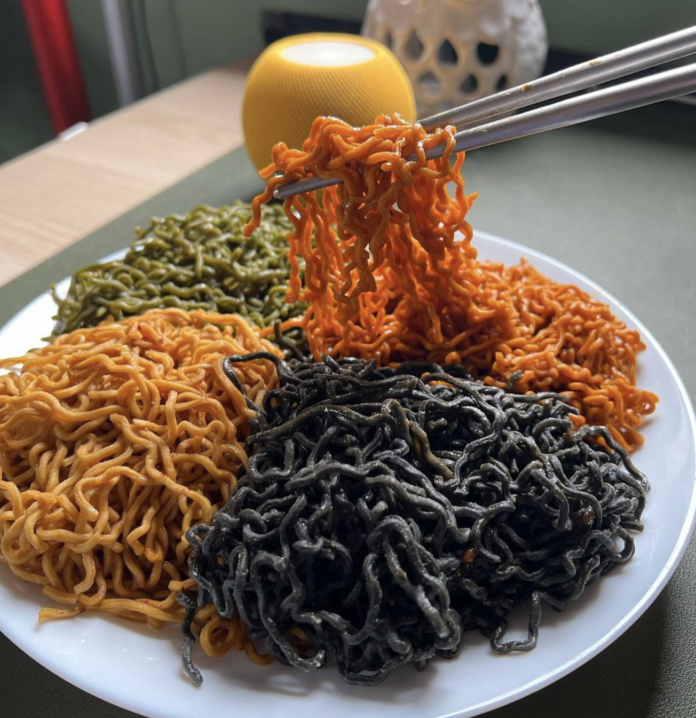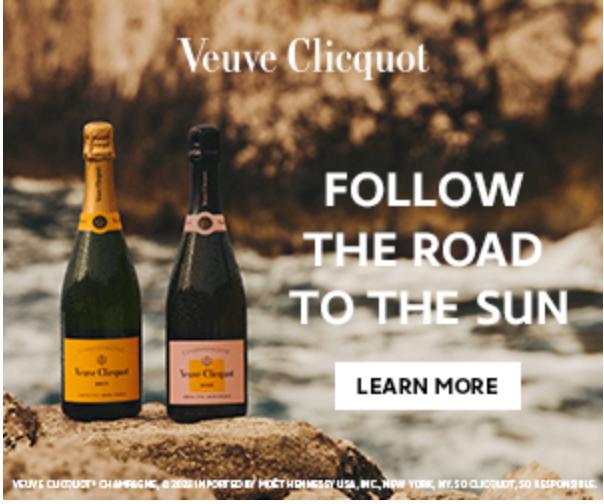The Future of food is getting “Better Better” thanks to WhatIf Foods and Chris Langwallner.
WhatIF Foods believes in a better better.
Tasty, delicious foods that are better for our bodies, better for our taste buds and farmer buds alike. Better for degraded lands, our eco-systems and naturally… better for cows.
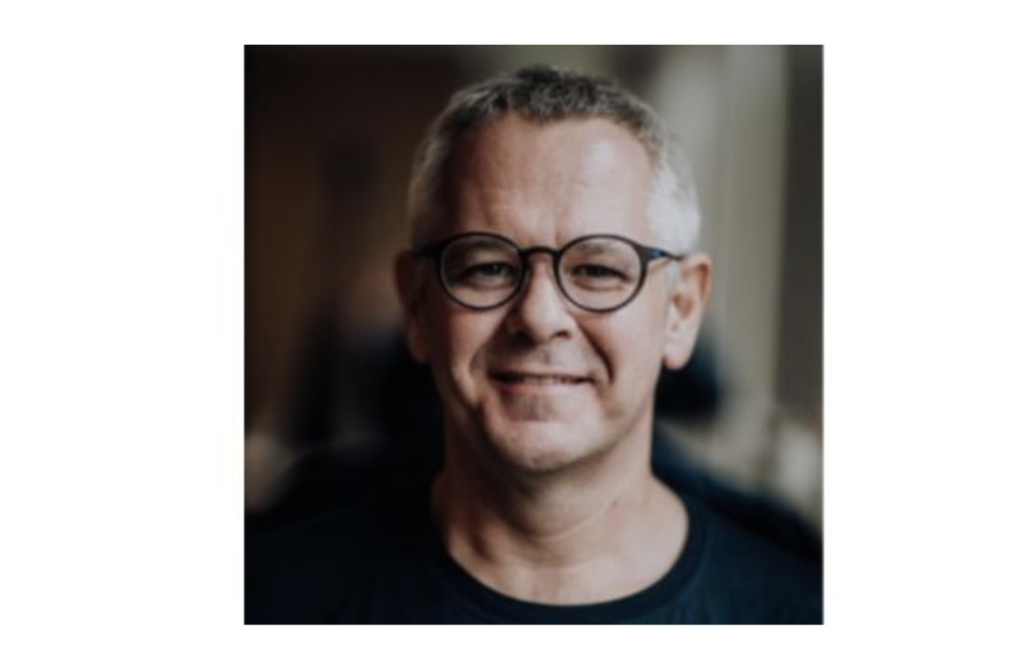
Today I had the chance to have a conversation (via zoom) with WhatIF Food’s Chris Langwallner to talk about inspiration, their foods, their flavors and the science and technology making it all happen.
This conversation has been edited for length and clarity. For the full conversation visit our YouTube channel.
Today we are here with Chris Langwallner from What If Foods. Thanks for joining us today.
Absolute pleasure. I cannot thank you enough. It’s fantastic to be here and letting our story get out a little bit. So thank you very much. I’m excited because it’s gonna be a lot of fun.
We’re talking about plant-based foods, we’re talking about planet based foods and for a “better-better” world. I’m hoping you’ll clarify that for us.
I look forward to it. Yes, it’s all about a planet based food company. It’s all about regenerating. It’s all about reconnecting to communities, restoring the greater land, and making sure that we are replenishing the nutrients we need on a day-to-day basis.
What inspired you to get into plant-based food?
To be honest with you, as a planet based company I think what really inspired me to get into a better way of doing things is actually a call out of my grandfather.
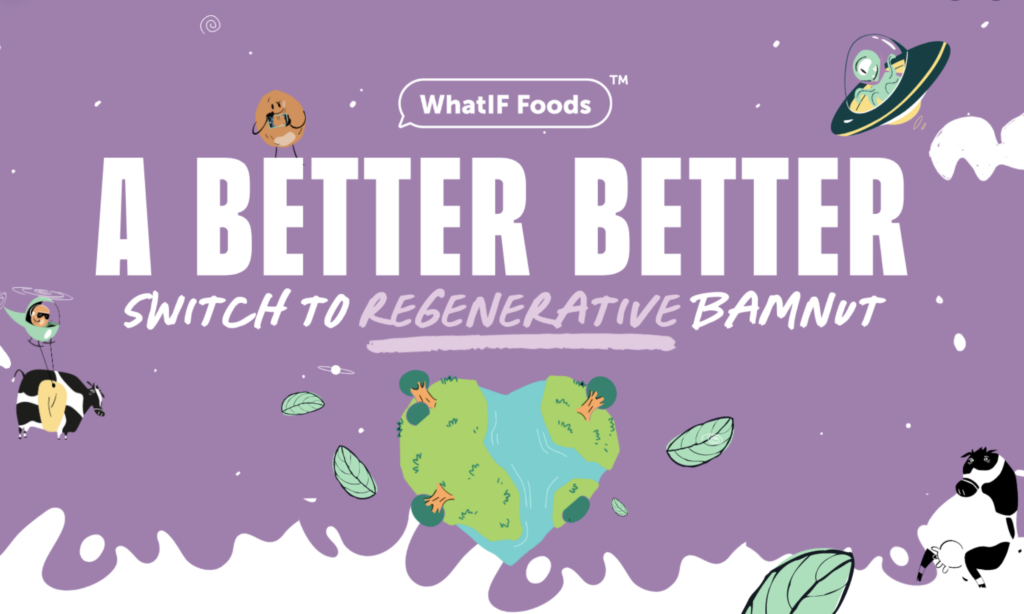
He has been always saying, leave this planet a better world than how you found it. When I was a young boy, I couldn’t understand. It was too abstract. I couldn’t really get my head around. But as I was then working in the industry for 20, 25 years you look behind the scenes, and you see how food is being manufactured on large scale and how profitability over shadows a lot of decision making.
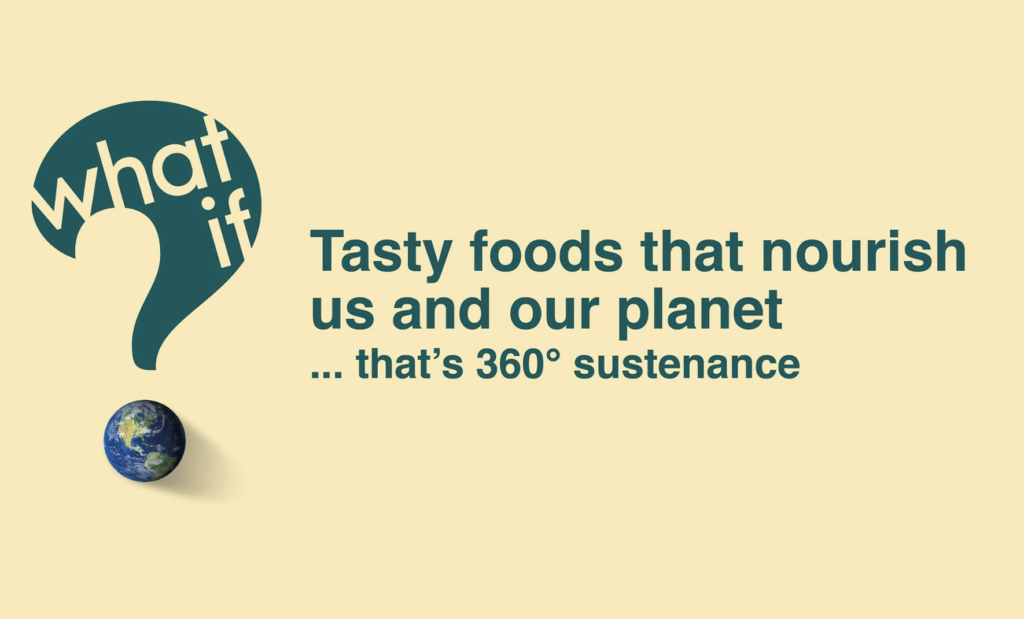
And on the other flip side of the coin, there is a community out there, about 2.6 billion people. This planet makes a direct income or an indirect income from farming activities. And the vast majority, more than two thirds of these people are the poorest of the poor. And we are leaving them behind. And that’s not fair to them because what we have on the plates has been harvested by them.
They take care of their land. And if we leave them behind in the current state of affairs We’ll see many tears in their eyes. And it doesn’t have to be that way. It can be totally different. And hence my strife was really to look at the planetary health and its affairs as well as humanity overall.
And thinking about that must be a better way of doing things and how can we improve it, not incrementally, but really make a system change. And here we are basically inspired by my grandfather.
On your website, you take some very science-based heavy content and you make it fun and easy. Talk about that process.
It’s a team effort. Honestly, there’s a huge team behind the scenes that works tirelessly on improving our communication and our style and our tone. But the essence of it all is that we understand that Gen Zs and today’s youth are essentially those consumer groups that are on this planet.
Probably the first sort of generation that is fully educated in sustainability. And they have their ability today by one click of a button to really look behind the scenes and understand whether or not there is BS or whether or not there’s transparency, there’s honesty, and there is a different approach to things.
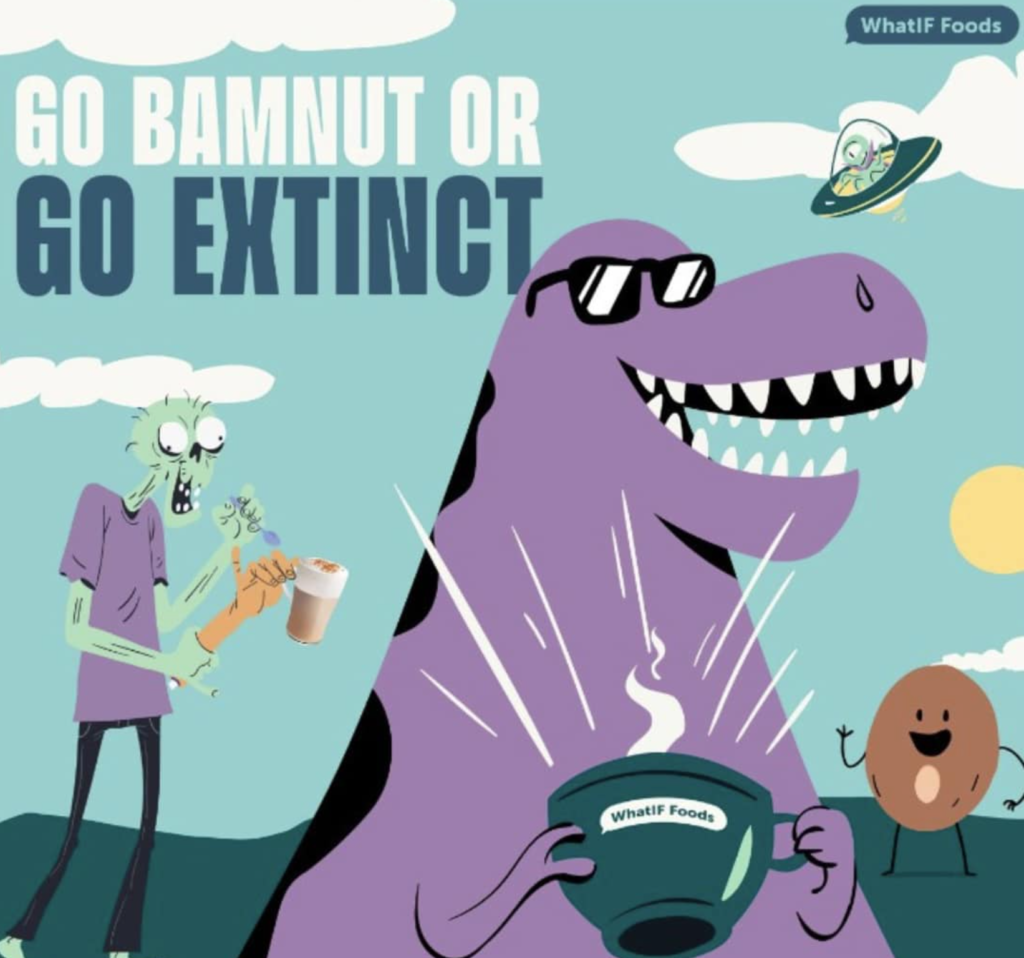
So that is one aspect of things. So we wanted to really make sure we are speaking to the youth on this planet. The second aspect of it all is that, You open your social media feeds today, or you open a media channel, you switch on your television and you are bombarded with bad news, after bad news.
And quite frankly, I have worked in universities and with students and I have been shocked by the fact that people, young guys, talk to me, ‘Hey, I don’t care about sustainability. I don’t care about our planet because it’s so crappy. Everything is so bad. I might as well just enjoy the time span I have on this planet.’

And I was shocked in contrast to what my grandfather told me. Today’s youth, some of them, not all, a fraction of them think like that. Or in other words I met this young girl and she says, I don’t know if I want to have children. Because I don’t know whether or not I would like to give birth to people that then inherit a planet that is so hot.
And all of that together was just making me restless and I wanted to really change things and and take this finite time span that I have on this planet to try as hard as I possibly can to leave it better than I found it. And that’s what I strive for. Hence we’re speaking with a fun and engaging voice.
We are speaking with colors and we are speaking with cartoons so that we basically get this heavy message across in an uplifting way and saying, Hey, you can be part of something. That actually does the opposite. It’s not grim. Yes. If we change, we can make this. We’re a better place and here we are.
Thanks for the call out. The credit goes to my team.
As we segue into the products themselves, what I wanna highlight is this BamNut Is that the nickname for the Bambara Groundnut?
Yeah, so we came up with Bamnut as a short version, as an acronym for the Bambara Ground Nut, which in reality is a legume, a legume that helps us fix nitrogen organically in soils that are essentially degraded and left behind by intensive agriculture.
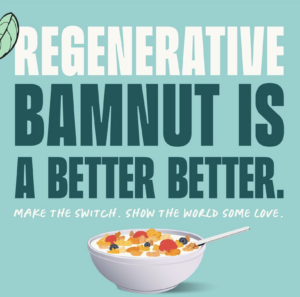
The Bamnut word came about in Singapore. We actually did not quite know when we started using it. We didn’t quite know how the Americans would pronounce it. And then we found out, alright, it’s the Bamnut. So it all turned out to be so witty and entertaining and just perfect fit for a “better, better” to be honest.
Because that’s a main ingredient in all of your food. Let’s talk about what is a BamNut. Why is it magical and unique?
I was walking through the world of agro food over the past 20 years, and I’ve always been hugely concerned about the massive speed of land degradation, particularly on arid land.
And that’s getting accelerated because of climate change; and the weather is changing; and the rains and the monsoons are not hitting regularly anymore. So it becomes increasingly more difficult to plant, the planting season to make sure that you are having the seeds in the ground before the rains hit them and so on and so forth.
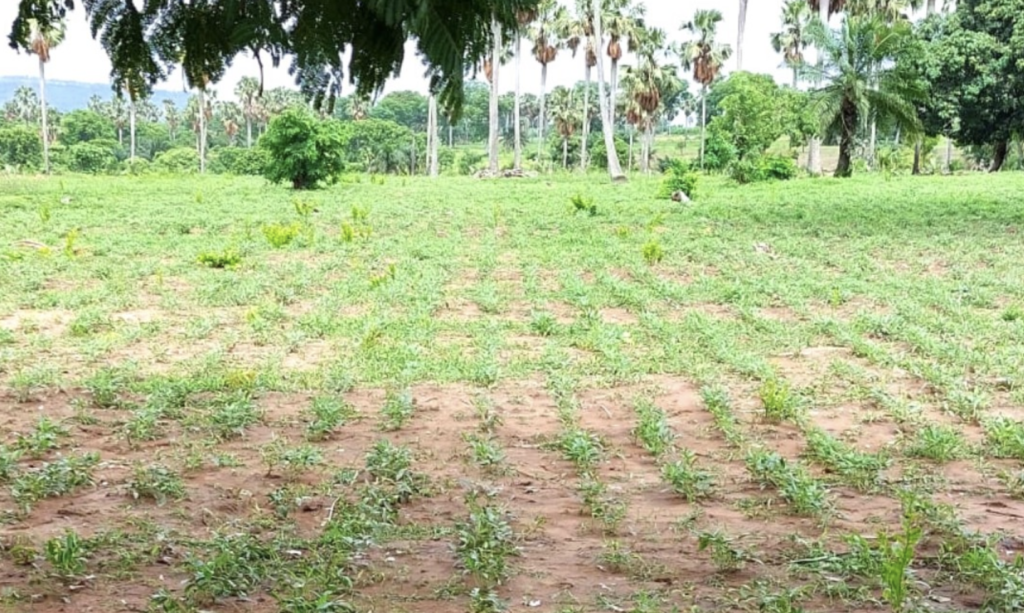
So it becomes really challenging for folks. So land turpitation has always been a huge concern of mine because another, on the flip side of that, we are losing about 25 soccer fields worth of arid land every minute, while at the very same minute, the same amount of primary forests have been cut down.
So if you compare and contrast these two figures, what it tells me is that in order to make way for the old food industry, we actually cut primary forest and we leave land behind. And that is the wrong thing to do. That is one aspect of things.
The other aspect of things is I had once the fantastic opportunity to have an interview with Dr. Roy Steiner of the Rockefeller Foundation. And he gave a casual shoutout and he said, nowhere in the world do we produce and consume enough legumes. And I was thinking, why does he say that? But then it’s quite obvious if you think it through, because we are depending so much on crops that the land that basically holds the crops is deprived from organic nitrogen fixing crops like the legumes, and in the absence of nitrogen being fixed through the legumes, we throw endless amounts of synthetic fertilizers on the ground in order to make up for it.
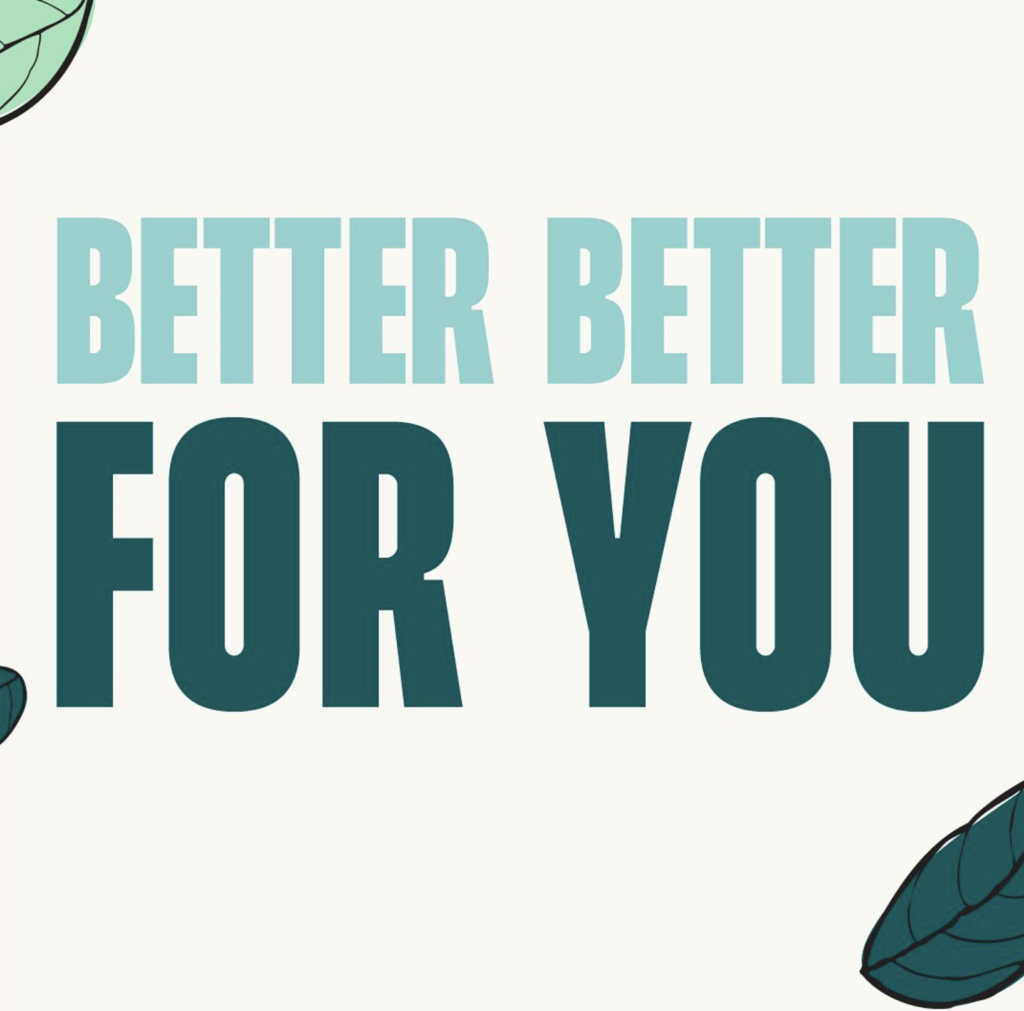
That’s an aspect of things that also worried me. But today the input costs have gone through the roof is it unravels all over the world and it has gotten more and more expensive to do so the degrading of land in one pocket, I was basically going through my work with that sort of lens.
Then there’s this whole water issue. We are big time irrigating crops, but what does that do? It just slows down the loss of water tables because the moment we take water out of the ground, the water tables are collapsing. I have numbers for that. I had a business in India a long time ago, and it used to be 30 meters, and today it’s probably 90 to 120 meters.
So water is basically a huge issue. There was another lens through which I looked at, and then I was at a conference in Jakarta, and I happened to run into a scientist. He said to me that he works on the Bambara groundnut. It’s a complete crop. I thought, “Oh, that’s interesting. So what does that mean?”

And I started to really explore that much more deeper. And a complete crop turns out to be essentially a crop that has all micronutrients in the sort of right balance that we need. On top of it, it has all nine essential amino acids that we need. It has rich fatty acids, quality fatty acids, as well as car complex carbohydrates. So fiber.
You remember the forgotten macronutrient fibers for our microbiomes? So I got really inspired. So I looked up the amino acid profile and I saw it is rich in plutonic acid or spartic acid. So these are very cool amino acids in terms of generating nice flavors. And off I was; I organized the first couple of five kilos and the trial started, and that’s years and years ago.
In the meantime, the Bambara groundnut actually taught us a few lessons because it’s a very hearty nut and it really takes an effort to make cool products outta it.
It’s called a complete product, is that correct?
A complete food. A complete crop or complete food crop.
Right now all of the products on your website are based from BamNut. I see Bam Nut milk. I see noodles with seasonings, and then there’s bundles and swag and all kinds of delicious things.
In the future, are we expanding that beyond or what’s the scope?
We would love to explore new categories as we build our business. There are so many occasions throughout the day where we can actually incorporate the bambara ground in exciting products, and we look forward to doing that.
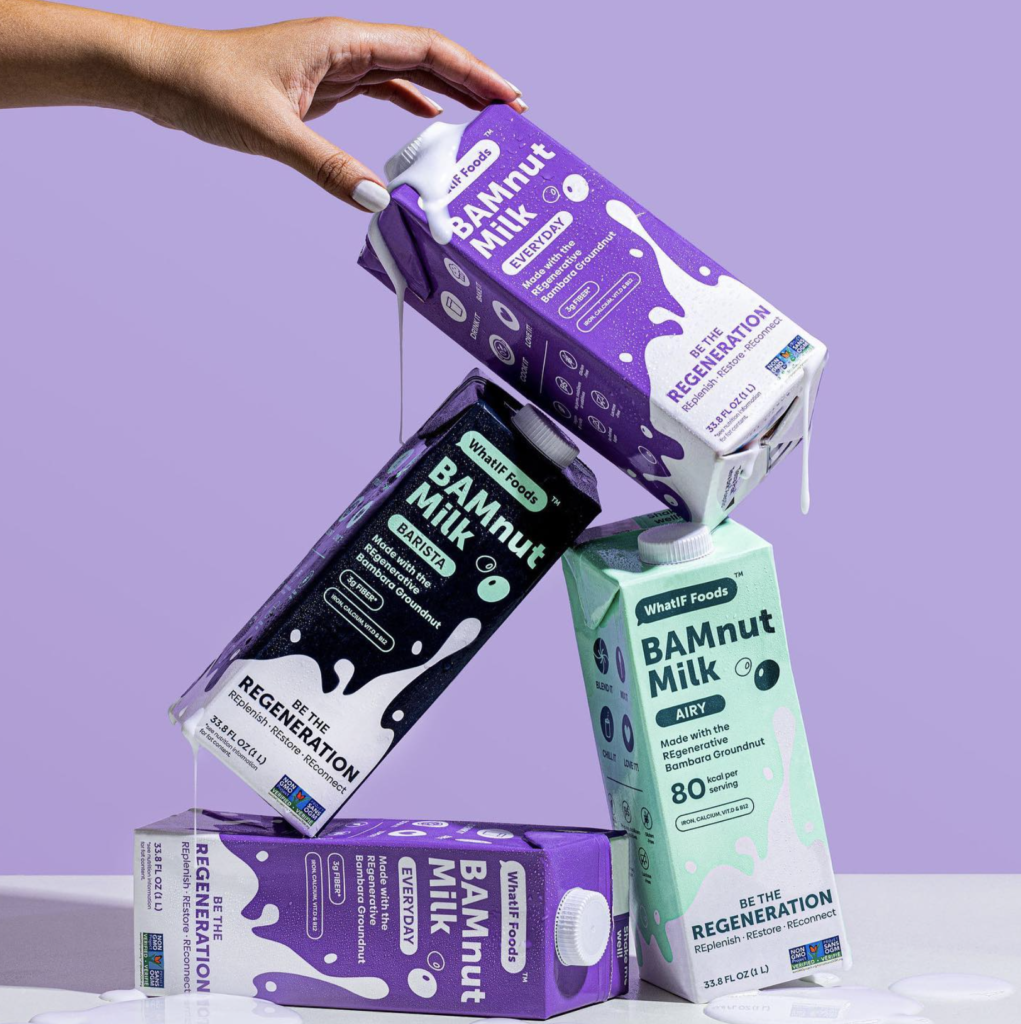
Our focus right now is definitely our milk portfolio. It’s a wonderful product. I encourage everybody to have a little taste and Judge for yourself. We have a client in Los Angeles, a coffee roaster, who said ‘This is the closest thing to cow milk that I’ve ever seen in plant-based milk.’
We call it planet based milk. I have to say again, shout out to my team in the R&D side of things because they have established a wonderful product essentially with just three ingredients: that’s water, the bambara groundnut, not coconut oil. The rest is essentially technology behind the scenes that actually makes it foam nicely, very stable foam, small bubbles. So you can do latte art.
Our Airy [flavor] is essentially the one that I would use for a nice drink, like a shake.
In between there is the Every Day [flavor] that goes essentially into my cereal in the morning.
What are the flavors?
Today we are in the market with three different products.
The first one in a slightly black sort of packaging is the Barista. It has the richest mouthfeel. It is the creamiest. We have designed it to perform fantastic or be able to perform fantastic latte art. So it really goes into the cappuccino sort of an experience rather nicely.
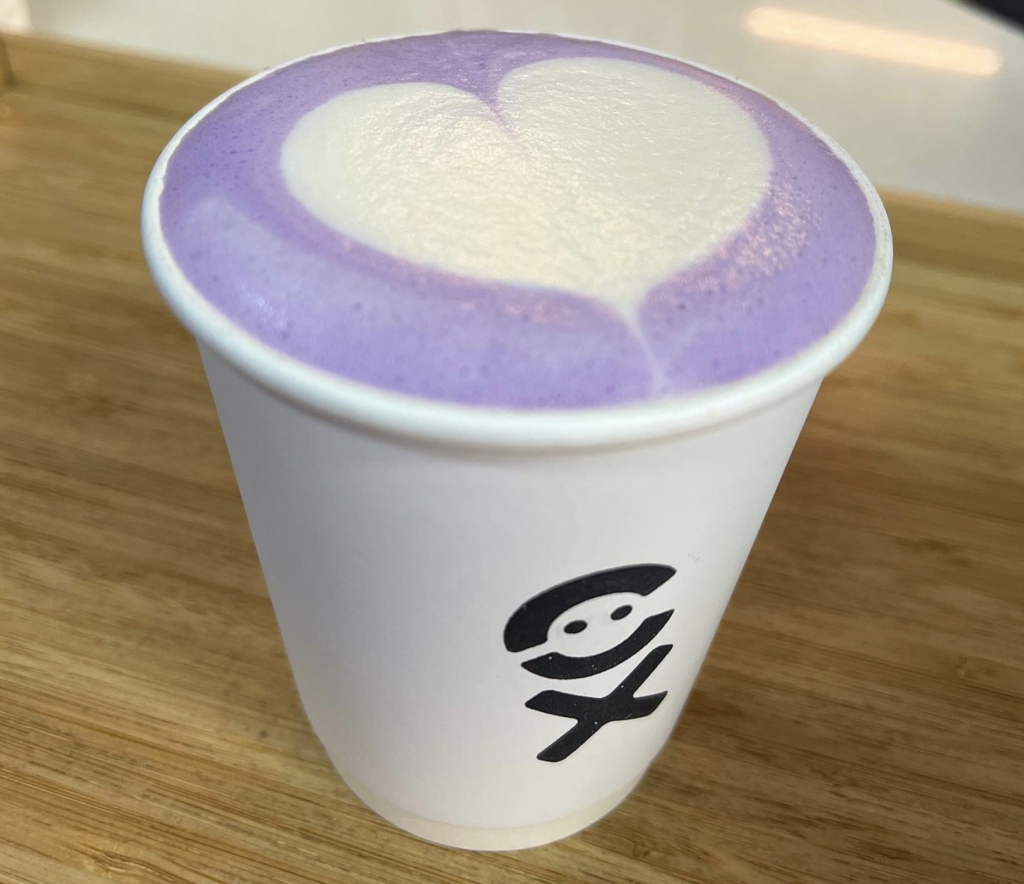
I personally take it also for Boba tea. I might as well use the bambara groundnut and foam it up.
I have my little trick with the barista. I actually froth it in the frother and I put my espresso shot into the frother with the barista together. So I froth it together. But that is just me. I just like it that way.

Then we have the purple package, which is our Everyday. My wife uses it in baking. We do make cakes, like traditional Austria style, and we totally use only the Everyday [flavor] for that.
Friends of mine [pour] it into their cereals in the morning. It’s a little bit richer, earthy, nutty in character because we do tend to roast the nuts a little bit stronger in the process of making it.
Last but not least, we have our Airy [flavor], which is the lightest one of it all. It is the mint colored package. It is the one that people take into milkshakes and protein shakes.
Let’s move on to Noodles
We wanted to create technologies that help us regenerate what’s broken. And today a large portion of all ramen that is being consumed on a day-to-day basis globally is deep fried in palm oil. Palm oil leaves huge banks of land degraded behind, particularly after the third cycle of palm plantations being grown.
We see the aftermath of the palm plantation industry essentially now in Southeast Asia. Therefore we were alerted when we started this project to basically say no to frying and no to deep frying and no, to essentially dehydrating instant noodles or ramen using that sort of process.
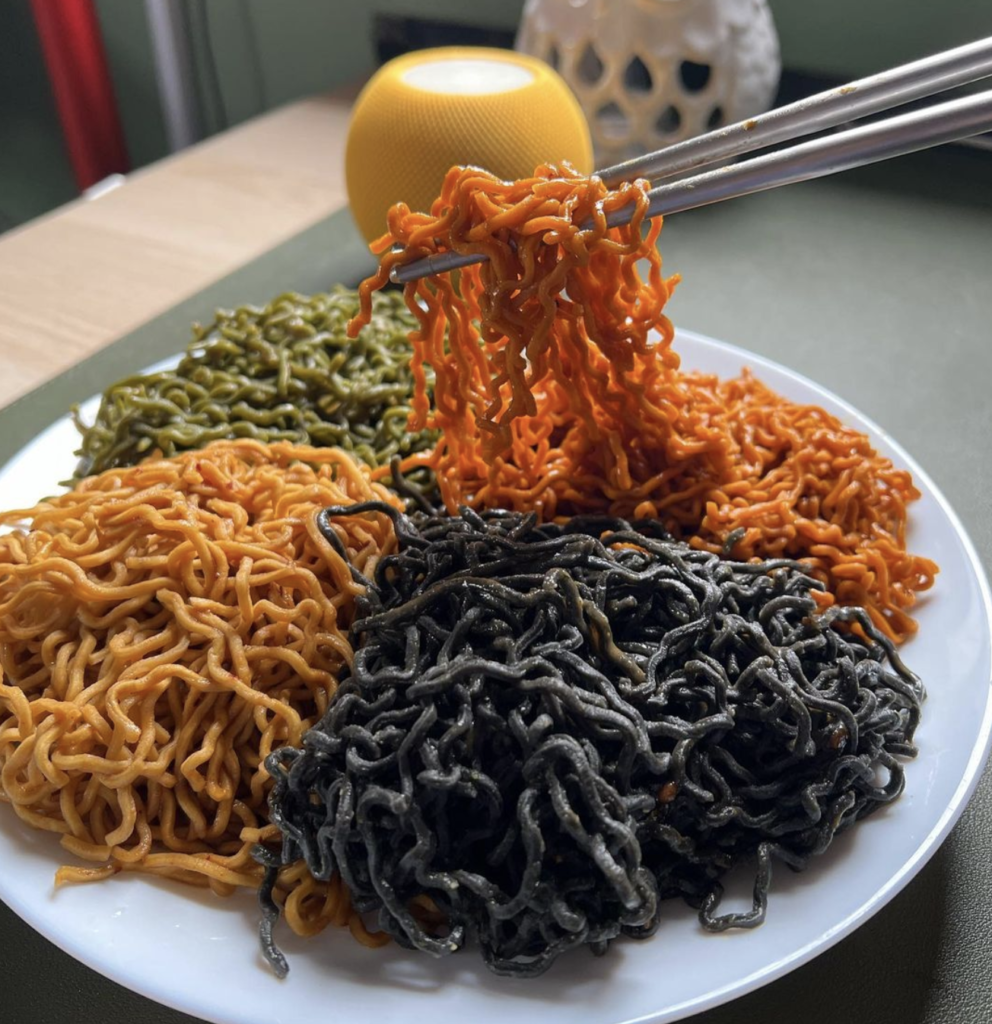
So we invented a technology that actually took that sort of challenge away. We invented an industrial scale air frying technology. Once you actually don’t fry anymore, you save about 20% of the space because 20% of palm oil is [based] in the noodle product of classic ramen. That’s what it absorbs in the frying process.
So if you don’t deep fry, you save 20%. Now nutrients will survive. Now colors may survive. Then we replaced all the palm oil with the Bambara.
We started to actually say, how can we bring color and different flavors and textures on the plates of consumers? And we created these four different products with the four different colors, which is essentially the black one, which is charcoal driven, moringa is green, pumpkin is orange and the original is yellow.
So four different options, all the same philosophy.
The backbone of making it is the same, but then we add different nutrients to it to have fun, and then we add fancy seasonings to it, which makes just a nice flavor experience as well.
Our audience is passionate, hungry, curious, foodies. What does it actually taste like?
I’m extremely proud of our Noodles because even without the seasonings, you can cook them up and eat them and you will have a wonderful experience.
Try and contrast that with other ramen that you find in the market, and you will come back to our offering immediately because they’re just tasting nice.
So our starting point of then adding the seasonings to it, like hot and spicy, or the mushrooms is an easy undertaking. It is actually an easy sort of concept to work with because if you have a neutral and nice taste to start with from the noodle base, you can build interesting flavor profiles on top.
Rather than having to use heavy flavors to mask off-flavor from a product base, or not so nice processes or even crappy raw materials. We don’t have that challenge.
We also decided very early on to keep the salt at a minimum to stay away from any flavor enhancers. No MSG, we’ve tried to keep it as clean as we possibly can.
We’ve tried to use as much spice as we can access. No flavoring and stuff like that. I’ve been in that industry for over 20 years. We thought let’s stay honest, to the product as well, to the noodles as well. And that has been a fantastic journey.
Our “Original, is a hot and sweet, hot and spicy pairing. In Southeast Asia, it’s based on wok cooking. That’s my personal favorite. I eat it on salads with a little bit of a balsamico dressing
We have with Sesame Garlic, many kids who go for a green one.
Pumpkin with the traditional Indian curry offer a great pairing. Watch out, it comes hot and spicy. Typical Indian flavors.
Last but not least is our charcoal with mushrooms. It’s fantastic for, if you go out to have a beer and come home and wanna have a bite, go for it. It’s a good one.
How did you decide which flavors to choose? Was it a lot of trial and error?
There’s a lot of trial and error. There’s a lot of pairing up with our noodles.
What we have tried to do is really look into what are the best pairings for these sort of flavors.
From that point of view, we also wanted to stay with our seasonings. We wanted to stay essentially planet based. None of our ingredients have any animal derived products in it.
You look at the charcoal, you cook it up, you eat it, you give it to a chef, let him experiment around.
We had a Spanish chef take our charcoal and put it into a paella. All of a sudden there was a totally different sort of recipe.
The way we actually derived the final products has also a lot to do with people that actually use it day-to-day in the kitchen and learn from them.
What’s the future of WhatIf foods?
We are going to enter new categories of food and we are gonna expand our existing categories with new products.
But I probably would love to use the opportunity to take you along on a more philosophical sort of journey for WhatIf foods and what comes hopefully in the next couple of years to come, because I think we have a better opportunity that needs doubling down now.
What I’m talking about is really the cost of the way we are making everything right from originating bambara groundnut, with partnering farming communities in all parts of Ghana. Encouraging them, making the ingredients ourselves, and then making the food applications, making the food, and then basically taking it to retail all the way through to Manhattan and other parts of the US.
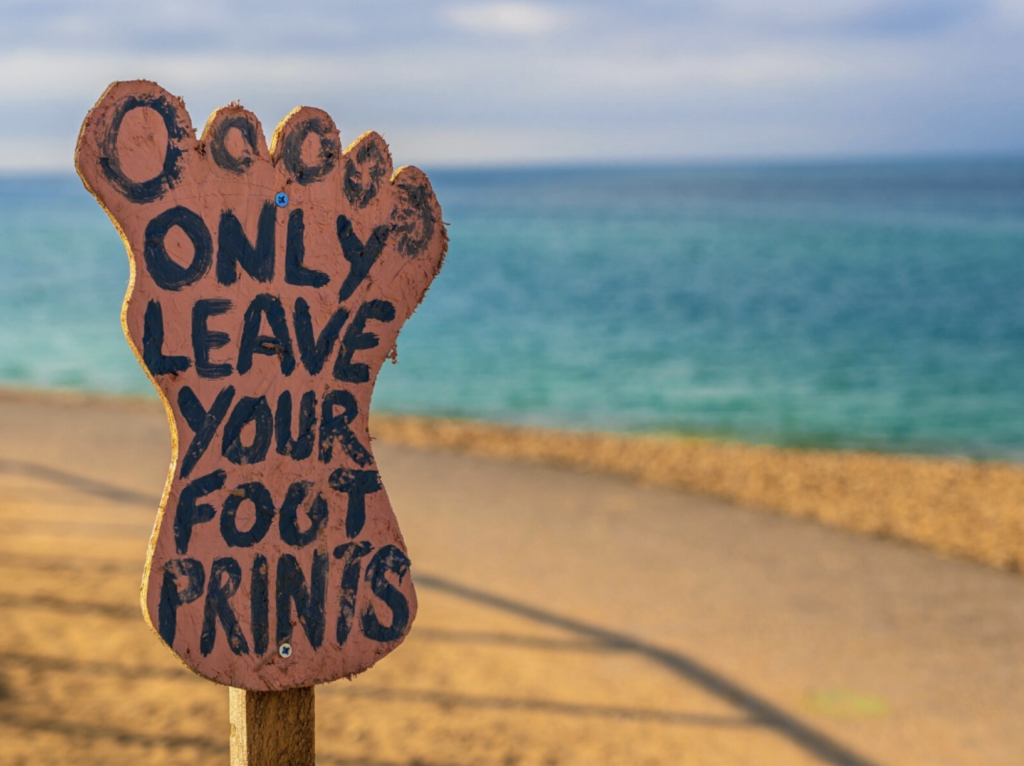
So it’s that entire regenerative value chain that we have created and what that actually represents to us is an opportunity to really explore the intersection between soil health and restoring the soil that has been once degraded from intensive agriculture.
It is that intersection of renewable energy because the Bambara groundnut now grows in a shell and hence the shell has energy in there and can be used in order to fire up essentially for power.
If you do that smartly, you generate biochar. With biochar, you then actually sequester carbon from the atmosphere into the soils permanently for hundreds, if not a thousand years to come.
And last but not least, another intersection is wellbeing for consumers. We call them “Better Believers” as well as farming communities because we work with them directly.
We are proud of the fact that we have increased profit, not income; profit of farmers who work with us by 300%.
At 2.5 acres, these farmers are permanently uplifted above the poverty line. That’s the intersection we really wanna double down to. Again, soil health, renewable energy, carbon sequestration.
Well-being for both the better believers as consumers, as well as the farming communities. Its possible and we’re looking forward to doing that on a large scale. If we wanna fulfill the demand that we hopefully can create, then we will probably need about 20,000 farmers to do that in the next five to ten years to come.
And then generate all the energy that we need internally to be there for carbon zero. Even further carbon or maybe even participate in the carbon market through certificates. That’s our next challenge. That’s where we wanna go.
Find more about What If Foods on their website


